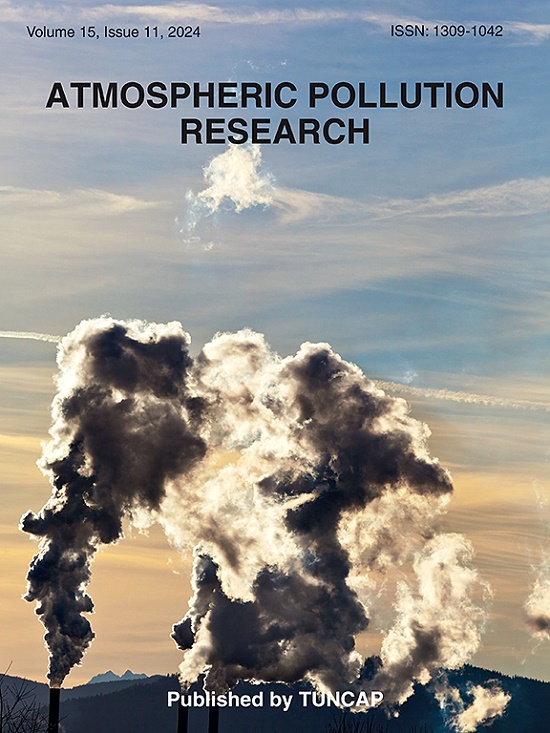Differential impacts of the 2015–2020 El Niño/El Niño Modoki on seasonal ozone levels across China
IF 3.9
3区 环境科学与生态学
Q2 ENVIRONMENTAL SCIENCES
引用次数: 0
Abstract
Utilizing daily data from nearly 1500 ground stations within a nationwide air-quality monitoring network spanning 2015 to 2020, this study identifies three primary spatiotemporal modes of ozone (O3) concentration anomalies and explores the sensitivity of surface O3 to both Eastern Pacific El Niño and Central Pacific El Niño (El Niño Modoki) across distinct Chinese regions and seasons. Results reveal limited sensitivity during spring and winter, wherein negative (positive) O3 anomalies predominate across China during the positive (negative) phase of either ENSO type, with spring magnitudes approximately doubling those observed in winter. In contrast, during summer and autumn, O3 anomalies exhibit significant variations depending on El Niño type and geographical location. Positive anomalies are notably pronounced in summer and autumn, particularly during El Niño Modoki in eastern China, while negative anomalies concentrate in western China during autumn, with a scattered distribution in summer. On average, magnitudes of O3 anomalies during El Niño Modoki surpass those during El Niño thoroughly, with the most pronounced differences in magnitude during summer for positive anomalies. The differences in O3 anomalies between El Niño and El Niño Modoki are attributed to variations in anomalous atmospheric circulations, wherein El Niño Modoki stands out with stronger anomalous 850-hPa highs and lows, along with stronger associated anomalous circulations, as well as larger extents and magnitudes of anomalous precipitation and solar radiation. These variations induce changes in low-level wind directions that influence regional O3 transport, and alterations in solar radiation and precipitation, impacting both O3 generation and removal processes.

求助全文
约1分钟内获得全文
求助全文
来源期刊

Atmospheric Pollution Research
ENVIRONMENTAL SCIENCES-
CiteScore
8.30
自引率
6.70%
发文量
256
审稿时长
36 days
期刊介绍:
Atmospheric Pollution Research (APR) is an international journal designed for the publication of articles on air pollution. Papers should present novel experimental results, theory and modeling of air pollution on local, regional, or global scales. Areas covered are research on inorganic, organic, and persistent organic air pollutants, air quality monitoring, air quality management, atmospheric dispersion and transport, air-surface (soil, water, and vegetation) exchange of pollutants, dry and wet deposition, indoor air quality, exposure assessment, health effects, satellite measurements, natural emissions, atmospheric chemistry, greenhouse gases, and effects on climate change.
 求助内容:
求助内容: 应助结果提醒方式:
应助结果提醒方式:


